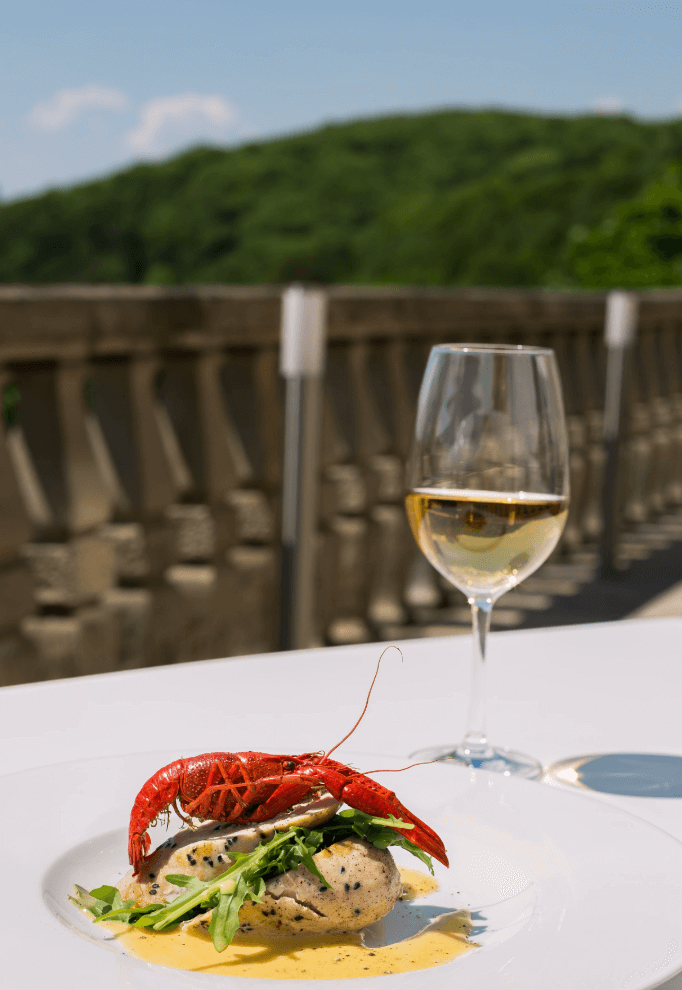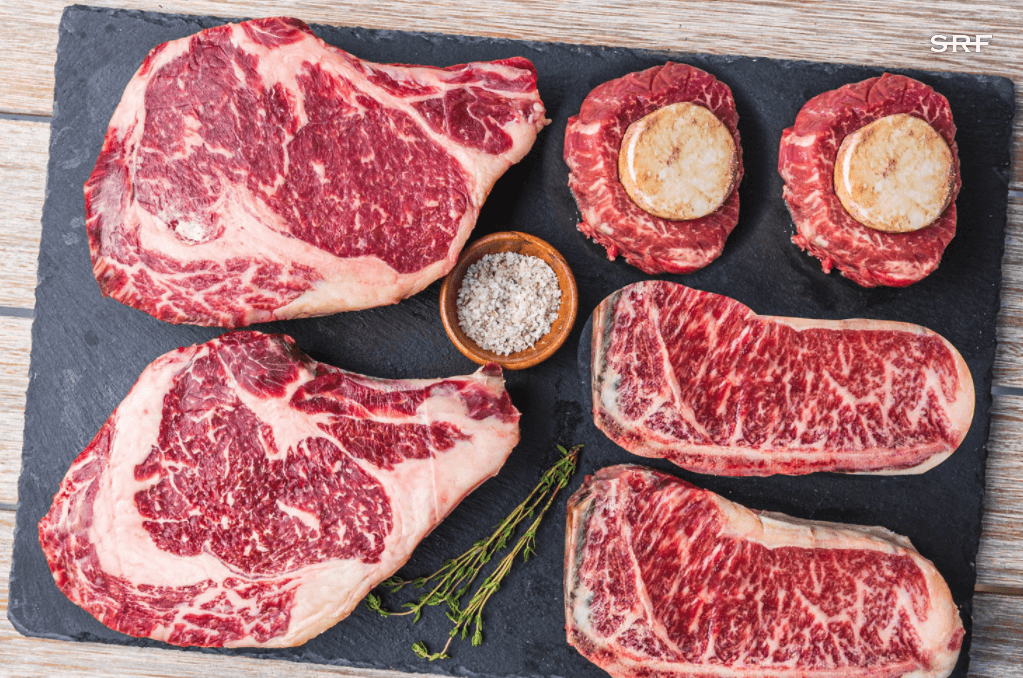Lobster is one of those culinary delicacies that has the power to send someone into an immediate state of salivation or send them running the other way – it is a love/hate relationship for many, as some folks refer to lobster as nothing more than a “bug.”
However, for those of us who enjoy this delicious crustacean, it is certainly worth paying attention to where the lobster is sourced from, how it’s prepared, what it’s served with, and, as we’ll discuss today, what’s the best wine with lobster. Pairing wine with seafood, in general, is an exciting endeavor in and of itself.
With the many flavors of the ocean at our disposal, there-in lies a seemingly endless array of possibilities to choose from when it comes to wine pairings. This is one reason why I particularly enjoy seafood: the sheer quantity of edible options literally floating around is astounding!
Types of Lobster – Quick Look
Before we dive into pairing wine with lobster, however, let’s take a quick look at the creature itself. While I could spend a great deal of time discussing the variety of lobsters found across our planet, I’ll instead categorize them all into two groups: Clawed lobsters and Spiny lobsters.
Clawed Lobster
I’d venture to say what most people think of when the word lobster is brought to their minds is a Clawed lobster – a lobster with two large claws at the forefront of the body. These are the lobsters you are most likely to see on display in a tank of water while at a seafood market or a high-end steakhouse.
Spiny Lobster
Spiny lobsters, on the other hand, are quite different from Clawed lobsters even though their bodies have many resemblances to each other. The notable difference in appearance between the two is that Spiny lobsters lack claws at the head of the body, instead having large antennae that give it its “spiny” characteristic. Both types are edible, and both are delicious!
Best White Wine With Lobster
When it comes to pairing wine with lobster, it’s best to locate a wine that compliments the inherent delicate, sweet flavors found in the lobster meat. While the actual flavor profile of the lobster can vary depending on its preparation it’s a general rule-of-thumb that crisp, delicate, and fresh wines are best paired with this dish.
Chardonnay
This green-skinned varietal, which originated in Burgundy, France is incredibly diverse, not only in terms of where it can be grown but also regarding its flavor profile and what food it can be paired with.
Chardonnay as a wine can range from being rich, buttery, and oaky with notes of vanilla, all the way to being completely unoaked, steely, and crisp with notes of citrus and fruit.
With this wide range of flavor profiles, one can easily imagine the sheer scope of food pairing options available to it.
Generally speaking, California produces a fair amount of Chardonnay that lean towards the more full-bodied, rich, buttery side of the flavor spectrum, while Burgundy produces a host of selections that lean in the opposite direction: more crisp and elegant with plenty of citrus and minerality.
However, California and Burgundy produce plenty of both styles. What’s great about this spectrum differentiation between the two regions is that lobster, in its wide array of preparation methods, can easily pair with wines from either camp.
Lobster that is served in rich, buttery sauces can be complimented by an oaky, equally rich Chardonnay from Napa Valley.
On the other hand, Lobster that has been boiled or baked can go well with a young white Burgundy from Chablis, which can offer up more of a lean, mineral-laden profile. Since there is plenty of diversity to be enjoyed when it comes to both Chardonnay and lobster, the options to explore when pairing both together are bountiful.
Chardonnay Suggestions with Lobster:
- William Fevre, Chablis, Champs Royaux
- Alexana, Terroir Selection Chardonnay
- Sandhi, Bentrock Chardonnay
Sauvignon Blanc
Like Chardonnay, this varietal is green-skinned and originates from France. While Chardonnay originates from Burgundy, Sauvignon Blanc hails from Bordeaux. Grown across the world this varietal produces an incredibly food-friendly wine that is crisp, dry, and quite refreshing to drink – especially on a hot summer day!
Tropical fruits, white flowers, lush green grass, fresh bell peppers are just a few of the many notes one can smell and taste in Sauvignon Blanc. With this diversity comes a host of food pairing options, and that’s where lobster comes in.
When I envision pairing Sauvignon Blanc with lobster, I picture a succulent broiled lobster that’s been basted with a thin glaze of clarified butter and sprinkled with fresh lemon juice. Simple, delicate, flavorful but not overly robust, this is the kind of food Sauvignon Blanc can truly shine with.
Both the lobster and the wine compliment each other in their restrained expressiveness; one is not dominant to the other. The fresh and zesty citrus notes often found in Sauvignon Blanc can mingle well with the lobster’s sweet meat, savory glaze, and citrus sprinkling.
Sauvignon Blanc Suggestions with Lobster:
- Henri Bourgeois Sancerre, Les Baronnes Blanc
- Cade Napa Valley Sauvignon Blanc
- Arkenstone ‘NVD’ Sauvignon Blanc
Riesling

Wine can be a divisive experience in some regards, namely because people have unique palates and their own personal preferences on what they like and don’t like. However, few varietals are so misunderstood and so divisive as Riesling, in my opinion.
Generally regarded as nothing more than a sweet, nectar-like wine that ought not garner a price tag exceeding $15/bottle, Riesling is not taken seriously by millions of wine-drinkers, especially when it comes to pairing it with food.
I’m here to convince wine-drinkers to reconsider. Riesling is a varietal that requires an intimate and oftentimes lengthy courtship in order to understand it – this process is worth every minute, every bottle, every sip.
When it comes to food pairings, Riesling is an absolute powerhouse as it can be paired with sweet dishes, spicy dishes and seafood, as well as garden-driven cuisine.
It has the power to be chalky and full of minerality; yet, it can also be a sweet, borderline viscous wine. It’s a wine that can be amazing when consumed young and ethereal after numerous decades of aging.
When it comes to Riesling I think of broiled lobster as I do with Sauvignon Blanc, and this is mainly due to the lobster meat’s natural sweetness. This sweetness can pair quite nicely with Riesling’s acidity, sweetness, and overall floral & citrus notes.
However, Riesling’s usefulness when lobster is on the menu doesn’t stop there, nor does lobster have to remain within the confines of being broiled or baked when Riesling is being served.
Consider this: Asian cuisine is well-known for its heavy utilization of exotic spices, and that even goes for lobster dishes. A sweet Riesling that has a fair amount of zing from its acidity can not only stand up to spicy dishes; it can be an outright stunner!
The heat of a spicy dish is beautifully counteracted by the Riesling’s sweet, refreshing, and tantalizing flavor profile, all of which comes together for a union that’s sure to impress.
Riesling Suggestions with Lobster:
- Domaine Wachau Federspiel Terrassen Riesling
- Schloss Vollrads Riesling Kabinett
- S.A. Prum, Wehlener Sonnenuhr Auslese Riesling
Best Red Wine With Lobster
However, don’t let this generalization limit you to just white wines! Yes, believe it or not there are some great red wines that are equally suited to being paired with lobster. Whether white or red, let’s dive in and see what friends lobster has in the world of wine.
Pinot Noir
The final varietal I’d like to discuss is Pinot Noir. However, I will preface this by saying that I’d like to limit this discussion to just one region: Burgundy
This famous wine-growing region in France is known for producing some of the finest wines in the world (and some of the most expensive), which goes for both red and white wine. Alas, Burgundy as a region (and France as a country) can offer wines ranging from a few dollars per bottle to tens-of-thousands of dollars per bottle and everything in between.
The options are wonderful, and the quality is remarkably consistent across the price spectrum. Burgundy as a region is well-known for producing Pinot Noir as its dominant red varietal and Chardonnay as its dominant white varietal.
Wine in Burgundy is classified according to the geographic location of where the fruit is sourced from. This classification system generally denotes overall quality, as well.
For the purposes of our discussion, I’ll be limiting us to only Regional and Village wines. Regional-level wines are made from grapes that are sourced from all over Burgundy.
For these wines you will see the word “Bourgogne” on the label, which is French for “Burgundy.” Stepping up one notch on the classification ladder are Village-level wines, which are made from grapes that are sourced from a more select area of Burgundy.
The wine label for a village-level wine will have the name of the actual village (or commune) on it, such as Chablis, Pouilly-Fuissé, Moulin-à-Vent, and Nuits-St-Georges, to name a few.
Pinot Noir Suggestions with Lobster:
- Domaine Thibault Liger-Belair Bourgogne Rouge, Grand Chaillots
- Joseph Drouhin Cote de Beaune
- Louis Jadot Pommard
Pinot Noir, in general, is a food-friendly varietal and can be enjoyed with a multitude of cuisines from all over the world.
From the ripe, fruit-forward Pinot Noirs found throughout California’s winegrowing regions to the more earthy, savory Pinot Noirs found in Burgundy, the ability to create an experience at the dinner table that is centered around this varietal is quite easy to do.
When it comes to pairing lobster with a Bourgogne Rouge (a regional red wine from Burgundy) the preparation of the lobster ought to be considered, just as it must be for the prior varietals we discussed. Lobster Thermidor comes to mind when thinking about a pairing with Burgundian Pinot Noir.
Rich, savory and very flavorful, Lobster Thermidor is a French dish that comprises cooked lobster, brandy, egg yolks, and oftentimes a cheese, all of which is combined to form a creamy mixture that is then poured inside of the lobster’s shell and cooked in the oven.
A great deal of Pinot Noir from Burgundy exhibits an overall flavor profile that is full enough in body to withstand the richness of Lobster Thermidor without overpowering the senses.
Burgundy Pinot can oftentimes exude notes of bright red cherries, sweet tobacco leaves, crushed gravel, iron, and even clove and menthol. This spectrum of smell and taste ensures for a flavorful yet balanced approach to enjoying a luxurious dish like Lobster Thermidor.
Best Wine With Lobster – Wrap Up
Lobster is a delicacy, and it ought to be treated as such. We pay careful attention to how the lobster is caught, how it’s stored (whether alive or not), how it’s prepared, and how it’s ultimately served and enjoyed.
From the time it’s caught to the time it’s consumed; a lot goes into getting a lobster to the dinner plate. The same can also be said of wine when it comes to getting it into your glass.
Pairing these two labor-intensive delicacies with one another is truly a heavenly match and can evoke emotional responses ranging from excitement and exhilaration all the way to serious, inner contemplation at just how amazing the two are for each other.
While lobster can oftentimes be viewed as a serious dish that ought to be reserved for special occasions, try and have some fun with this pairing – let’s call it experimenting in style! And whether it causes a smile from ear-to-ear, or just a satisfied mmmmm, enjoy the experience, enjoy the journey, and happy sipping!
Looking for more wine suggestions? Check out these posts next:
Discover more from Own The Grill
Subscribe to get the latest posts sent to your email.








